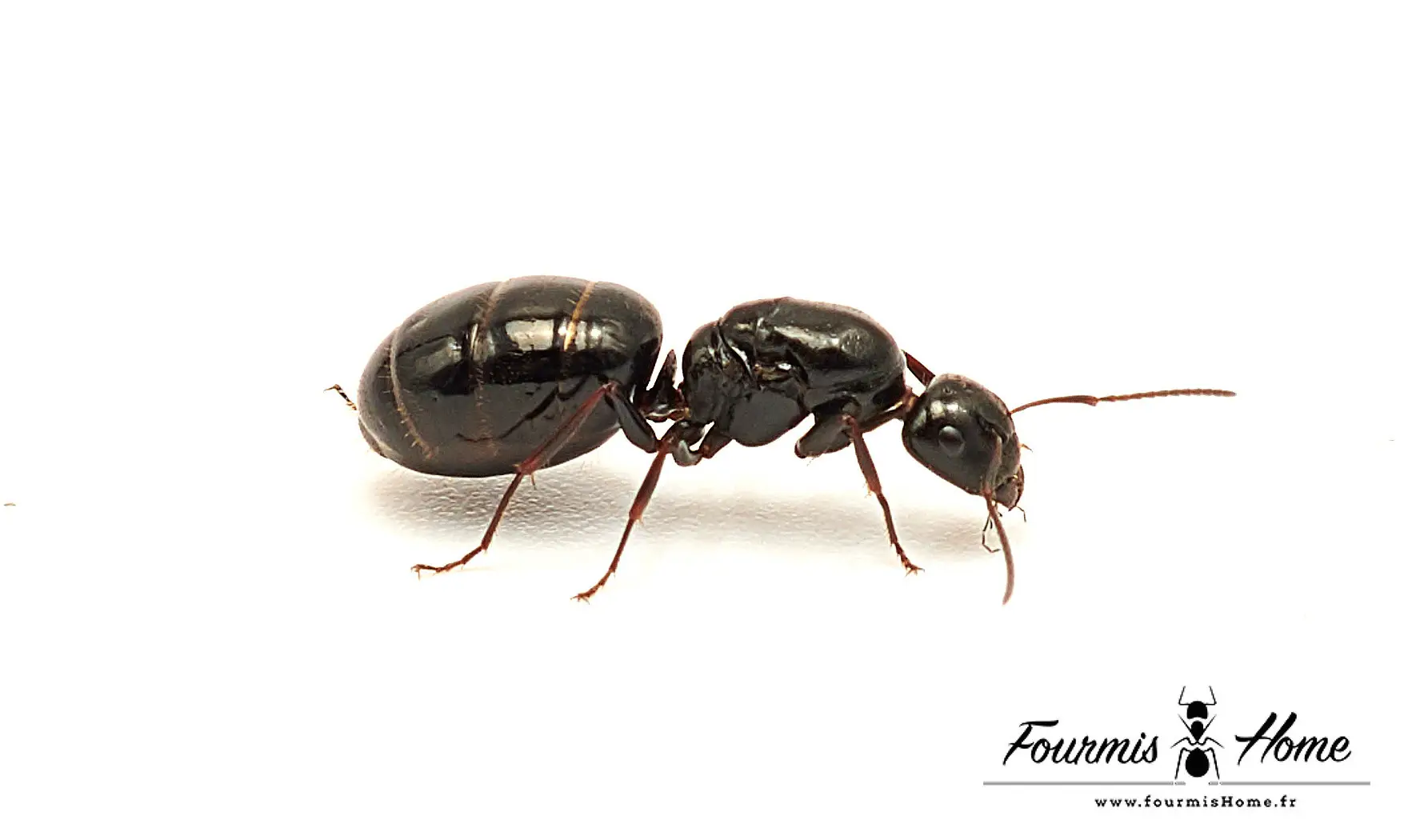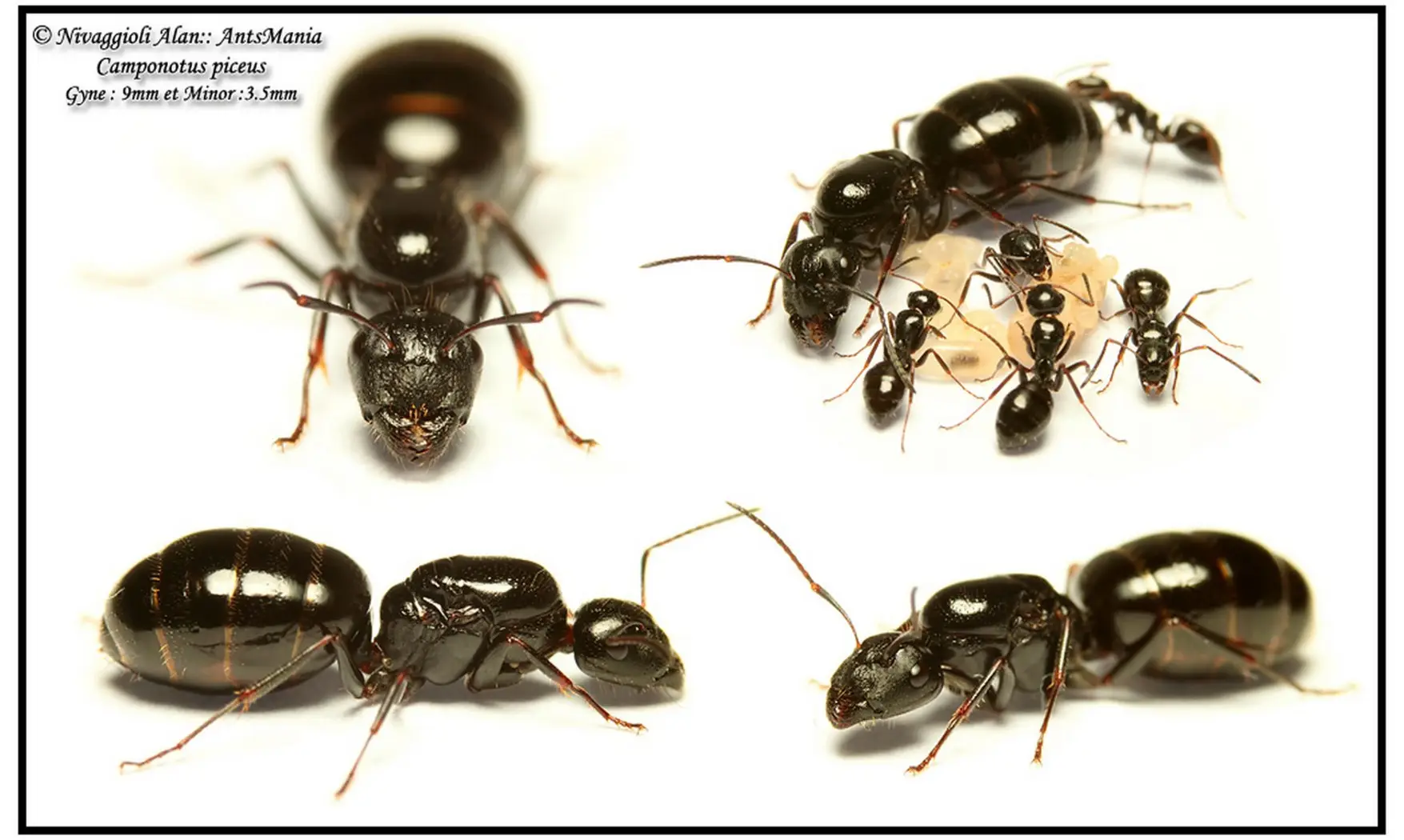



Camponotus piceus
Reference : CFOUR-071
9.90€
Unavailable
0 in stock
Latin name: Camponotus piceus
Taxonomy: Subfamily: Formicinae, Tribe: Camponotini
Breeding level: Beginner
Geographical distribution: Central Europe mainly above 300 m
Habitat: Dry and semi-dry meadows.
Colony form: Monogyne
Queen: Size: 9 - 10mm Color: Shiny black
Workers: Size: 4 - 6mm Color: Shiny black
Major: Size 8 - 9mm Color: Shiny Black
Male: Size: 5mm Color: Black
Food: Honeydew and insects: like flies, mealworms, mosquitoes and small crickets; also fruits
Humidity: Hunting area: 30 - 50% Nest: 50 - 60%
Temperature: Hunting area: 18 - 28 ° C Nest: 21-24 ° C
Hibernation: Yes, from the end of October to the end of March between 8 and 12 ° C
Nest type: Plexiglas nest, nest with tubes, reconstituted stone nest.
Description: Camponotus piceus are shy ants that avoid aggressive encounters with other ants.
Development: Swarming from the end of April to the beginning of July.
Foundation: Claustral (without food) Development: 35 days from egg to worker (depending on temperature)
Size of the colony: A few hundred individuals, the queen can reach the age of 15 years.
Taxonomy: Subfamily: Formicinae, Tribe: Camponotini
Breeding level: Beginner
Geographical distribution: Central Europe mainly above 300 m
Habitat: Dry and semi-dry meadows.
Colony form: Monogyne
Queen: Size: 9 - 10mm Color: Shiny black
Workers: Size: 4 - 6mm Color: Shiny black
Major: Size 8 - 9mm Color: Shiny Black
Male: Size: 5mm Color: Black
Food: Honeydew and insects: like flies, mealworms, mosquitoes and small crickets; also fruits
Humidity: Hunting area: 30 - 50% Nest: 50 - 60%
Temperature: Hunting area: 18 - 28 ° C Nest: 21-24 ° C
Hibernation: Yes, from the end of October to the end of March between 8 and 12 ° C
Nest type: Plexiglas nest, nest with tubes, reconstituted stone nest.
Description: Camponotus piceus are shy ants that avoid aggressive encounters with other ants.
Development: Swarming from the end of April to the beginning of July.
Foundation: Claustral (without food) Development: 35 days from egg to worker (depending on temperature)
Size of the colony: A few hundred individuals, the queen can reach the age of 15 years.
Recommended products

